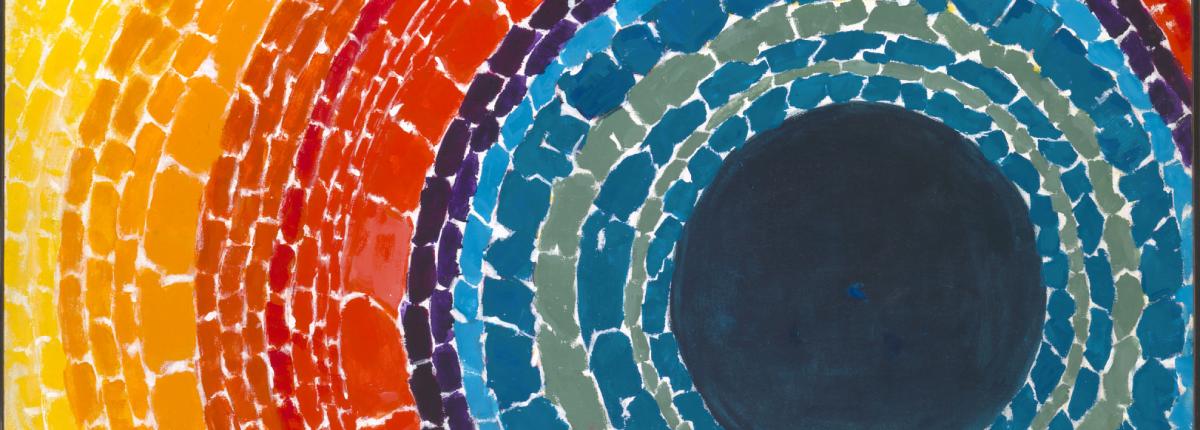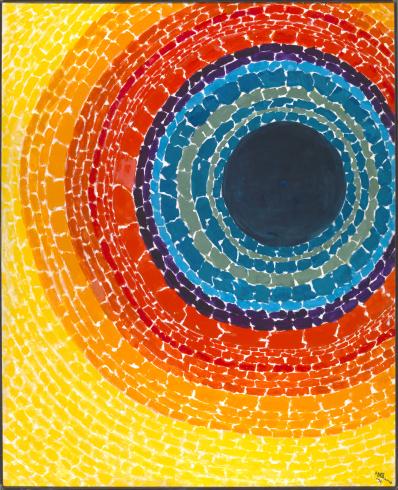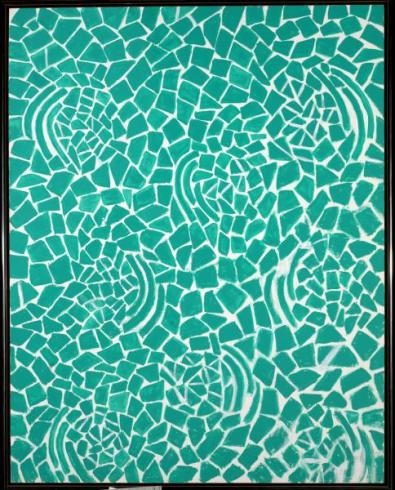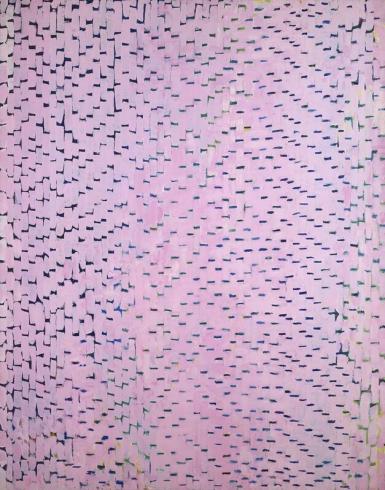Finding Beauty in the World

Part 1: The World Around Us
Introduce:
- Share with students that they will learn more about the art of Alma Thomas, a Black artist and teacher from Washington, DC.
- Read to students Alma’s Dream by Obiora N. Anekwe
- Teacher note: There may be some words that students don’t know such as:
- Segregated: The enforced separation of different racial groups in a country, community, or establishment.
- Enchanted: Filled with delight, with a magical feeling to it.
- Teacher note: There may be some words that students don’t know such as:
- After reading the book, engage in a whole class discussion. Ask students:
- How did Thomas escape from some of the harsh realities of growing up in the South?
- CONNECT: What do you do to help escape when you are having a hard time emotionally?
- What kinds of things did Thomas choose to paint? Why do you think she might have wanted to paint those things?
- When in her life did Alma Thomas become a full-time artist?
- CONNECT: What does this fact tell you about achieving your dreams?
- How did Thomas escape from some of the harsh realities of growing up in the South?
Part 2: A Closer Look at the Art of Alma Thomas
Discovering Beauty in Our World:
- Read the following quotation to students, in which Thomas explains how she approached her work:
“I’ve never bothered painting the ugly things in life. People struggling, having difficulty. You meet that when you go out, and then you have to come back and see the same thing hanging on the wall. No. I wanted something beautiful that you could sit down and look at.” - Ask: Based on this quote, why do you think Alma Thomas chose to paint beautiful things?
- Explain to students that they will have an opportunity to think about what’s beautiful in their worlds.
- In pairs, have students brainstorm things in life they believe to be beautiful. Use the brainstorm graphic organizer to jot down their thoughts.
- Students share their responses and create a whole class brainstorm on chart paper titled, “Beauty in the World.”
Discovering Beauty in Thomas’s World:
- Explain to students that they will now take a closer look at some of Alma Thomas’s paintings and explore how she found beauty in the world.
- In small groups of 3-4, have students complete the Finding Beauty in the World: The Art of Alma Thomas Guidesheet.
- As a whole group, discuss:
- Based on the paintings you just looked at, what types of scenes did Alma Thomas paint?
- What real things did her paintings remind you of?
- What colors did she use? How about patterns?
- How did you feel looking at her paintings?
- CONNECT: What connections did you see between what Alma Thomas painted and things we listed on our “Beauty in the World” brainstorm?
Part 3: Creating a More Beautiful World
- Explain to students that they will create their own art showing the natural world in the style of Alma Thomas.
- Have students select one of the responses from the “Beauty in the World” brainstorm. Using paint, markers, crayons, and/or tempera sticks, create their own art depicting that beauty of the natural world.
- Remind students that:
- Alma Thomas represented the world through colors and patterns.
- The topic of their artwork does not need to look exactly like the thing they are drawing.
Share:
- Have students share their pieces with the class.
- The rest of the class should:
- Describe how they feel while looking at the artwork
- IDENTIFY the objects from nature they think are represented in the artwork
Additional Context
Lesson Context
Alma Woodsey Thomas, a Black artist and teacher from Washington, DC, once said:
“I’ve never bothered painting the ugly things in life. People struggling, having difficulty. You meet that when you go out, and then you have to come back and see the same thing hanging on the wall. No. I wanted something beautiful that you could sit down and look at.”
She spent her early years teaching others how to paint and it wasn’t until later in her life that she became a full-time artist, creating the expressionist paintings for which she is best known. As the quotation suggests, Thomas spent much of her life observing and finding the beauty in the world and created art that depicted that beauty.
Key Terms
Nature: The physical world which includes plants, animals, landscape, and anything of the earth as opposed to objects created by people.
Segregation: The enforced separation of different racial groups in a country, community, or establishment.


